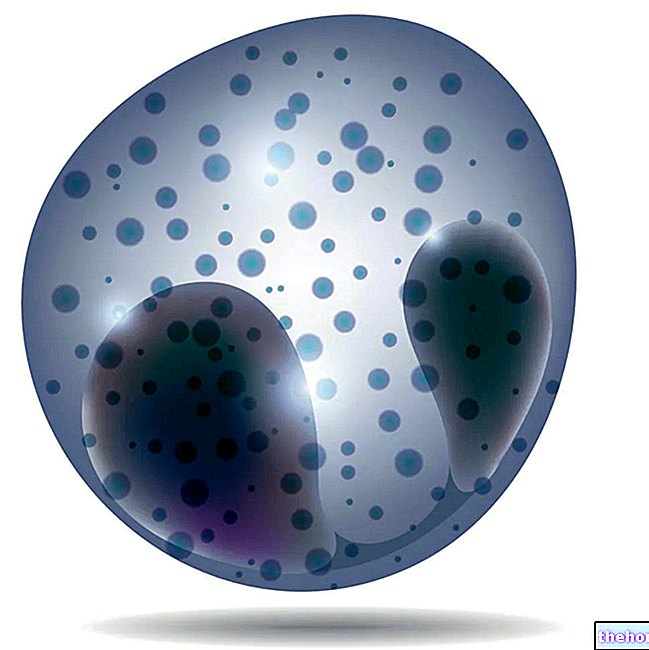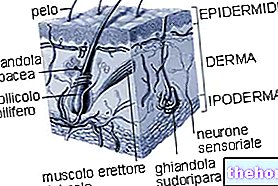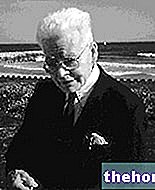What is Insulin
Insulin is a hormone of a protein nature, produced by groups of pancreatic cells, called "β cells of the islets of the Langerhans." It was discovered in 1921 by the Englishman John James Macleod and the Canadian Frederick Grant Bating, Nobel Prize for Medicine in 1923.
Functions
Insulin is the anabolic hormone par excellence, in fact through its action:
- it facilitates the passage of glucose from the blood to the cells and therefore has a hypoglycemic action (lowers blood sugar). It promotes the accumulation of glucose in the form of glycogen (glycogenosynthesis) in the liver and inhibits the degradation of glycogen to glucose (glycogenolysis).
- It facilitates the passage of amino acids from the blood to the cells, has an anabolic function because it stimulates protein synthesis and inhibits neoglucogenesis (formation of glucose starting from some amino acids).
- It facilitates the passage of fatty acids from the blood to the cells, stimulates the synthesis of fatty acids starting from excess glucose and amino acids and inhibits lipolysis (use of fatty acids for energy purposes).
- It facilitates the passage of potassium inside the cells.
- It stimulates cell proliferation.
- It stimulates the use of glucose for energy production.
- It stimulates the endogenous production of cholesterol.
The greatest stimulus for insulin action is given by a meal rich in simple carbohydrates and low in fiber, fat and protein. Even some drugs (sulfonylureas) are able to increase their secretion.
Insights
Insulin and sportGlycemia and weight loss Diabetes Insulin resistance Hyperinsulinemia Rapid insulin and slow insulin Insulin-based drugsSynthesis
Proinsulin is the biosynthetic precursor of insulin. There is also a pre-proinsulin which, compared to proinsulin, has an amino acid sequence that acts as a signal for its transport, first in the endoplasmic reticulo-endoplasmic and then in the Golgi, where it reaches the correct conformation.

Insulin is released as a globular protein with a unique polypeptide chain from polyribosomes, then the hormone is deposited in the form of granules reaching a crystalline form visible under the electron microscope. As the concentration increases, insulin is aggregated into dimers (pair of monomers held together by weak bonds) and trimers of dimers or hexamers (held together by 2 central hexacoordinated Zn ions with the 3 tyrosines of the dimers and the three molecules of H2O ).
Once the insulin has been poured into the bloodstream, it passes, by dilution, to the dimeric and monomeric form, the latter conformation recognized by the insulin receptor.
Some researchers noted that in human insulin there are variable regions, in particular the sequence of amino acids 28 and 29 (Pro-Lys) of the β chain; later it was discovered that by reversing these AAs the insulin passed directly to the monometric state, skipping the dimeric one. Thus was born the "Lys Pro" or "rapid insulin", a drug particularly useful if injected near a large meal.
Mechanism D "action
The insulin receptor is a transmembrane glycoprotein consisting of 4 chains (2α outside the cell and 2β inside the cell), joined together by sulphide bridges. The molecule has a rather short half-life and is therefore subject to a rapid turnaround. over. It too is synthesized as a precursor by the rough endoplasmic reticulum and is then processed in the Golgi. The 2 α chains are rich in cysteines while the β chains are rich in hydrophobic AAs, which anchor them to the cell membrane, and thyroxins, facing the inside. to the cytosol.
Insulin receptor binding stimulates tyrosine kinase activity and leads to the expenditure of 1 ATP per phosphorylated tyrosine. This causes a series of chain events (activation of the G proteins of phospholipase C) which lead to the formation of two products: the remaining DAG anchored to the membrane and which intervenes in the phosphorylation of proteins, and the IP3 which acts at the cytosolic level allowing the release of Ca ++ ions.
When the blood sugar rises, the amount of insulin secreted by the cells of the pancreas increases. In insulin dependent cells, the insulin receptor binding acts on an intracellular pool of vesicles, freeing the glucose transporter which is transferred to the membrane by fusion. The transport brings glucose into the cell, causing a decrease in blood sugar which in turn stimulates the dissociation between insulin and its receptor. This dissociation triggers a process of similar endocytosis with which the carrier is brought back inside the vesicles .
Diabetes and Insulin
The term diabetes comes from the Greek diabetes and it means go through. One of the characteristic clinical signs of this pathology is the presence of sugar in the urine, which reaches it through the kidney when its concentration in the blood exceeds a certain value. The adjective mellitus has been associated with this term because urine, due to the presence of sugar, is sweet and, in ancient times, tasting was the only way to diagnose the disease.
Diabetes mellitus is a chronic disease characterized by hyperglycemia, i.e. an increase in sugars (glucose) present in the blood. It is caused by a reduced secretion of INSULIN or by the combination of reduced secretion and peripheral resistance to the action of this hormone.
Under normal conditions, insulin, released by the pancreas, enters the bloodstream where it functions as a "key" necessary to let glucose enter the cells, which, depending on metabolic requirements, will use it or store it as a reserve. This explains why a deficiency or an "altered insulin action is accompanied by an increase in the sugars present in the circulation, a characteristic typical of diabetes.




























